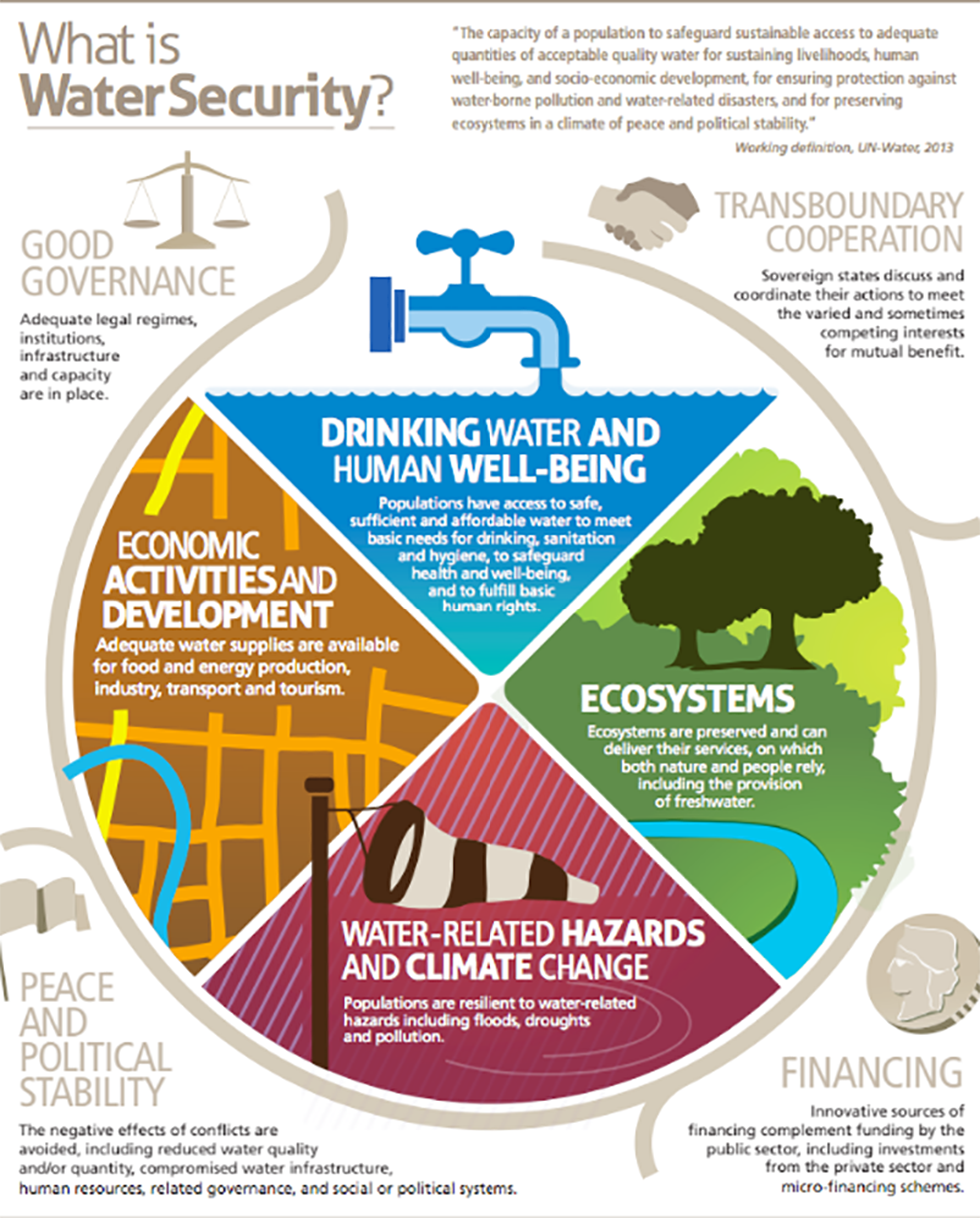Biodiversity & Environment
Water Security in Asia
- 02 Jul 2022
- 5 min read
For Prelims: Water Resource, Rain Harvesting
For Mains: Challenges faced due to water security and what steps could be taken to tackle it
Why in News?
Recent findings by the scientists of southeast Asian countries show that the urban water security in Asian cities including Delhi is in decline.
- The global mega cities like Tokyo, Shanghai, and Delhi are the symbol of the rise of the new Asian century as they are the three biggest in the world, engines of economic growth, producing billions in economic activity for their residents and the world.
- But they have a serious problem i.e., there is not enough fresh water available per person for their daily needs.
What are the Issues?
- Amount of Freshwater:
- In Asia, there is half as much freshwater as there is globally.
- Low Water Efficiency:
- Despite the comparatively large amount of water used in agriculture production, water efficiency is also among the lowest in the world, and low water productivity results in low crop yields.
- Urban Pollution:
- Water problems are common in many big cities. Degradation of the environment has been caused by population and economic growth due to industrial activities and discharge of industrial waste in water bodies.
- Existing water resources just cannot meet the rising demand.
- Climate change:
- Due to climate change, extreme weather events like droughts and floods are becoming more frequent, which exacerbates the problem.
- Examples:
- Over-exploitation in Bangkok, Thailand, has severely reduced groundwater levels, causing land to subside.
- Water sources around the city are also polluted due to the direct discharge of domestic sewage into drains and canals.
- Similarly, Bangkok’s inadequate drainage capacity and its location in the Chao Phraya River floodplains make it susceptible to flooding.
- Hanoi, Vietnam, is one of the fastest-growing cities in terms of GDP growth, contributing more than 19% of the country’s total GDP.
- The repercussions of this growth are felt directly in its polluted lakes and rivers due to wastewater from residential and industrial areas.
- Madaba in Jordan is a water-scarce city.
- Although 98% of the city's population has access to water, residents are often forced to rely on alternative sources of storage such as large tanks or private water vendors to meet their needs due to inconsistent water supplies.
- Over-exploitation in Bangkok, Thailand, has severely reduced groundwater levels, causing land to subside.
What are the Suggestions?
- Policy Intervention:
- Practical interventions can help, like the integrated urban water security assessment framework. It can be used to assess the full spectrum of a city’s urban water security by considering the driving forces that can impact it.
- Leveraging Technology:
- Researchers at Thailand’s Asian Institute of Technology (AIT) have developed WATSAT, a web-based water security assessment tool that can evaluate where cities stand by measuring five distinct aspects of urban water security: water supply, sanitation, water productivity, water environment and water governance.
- Local Solutions:
- Cities that embrace new ways to manage water can improve the livelihoods of their populations and support continued growth. For example, Bangkok has adopted incentives for water management to include the treatment of wastewater at the household level before being released into public water sources.
- As a part of Bangkok Vision 2032, the programme will also monitor the chemical properties of water in canals and improve cleanliness to prevent illnesses and safeguard the environment.
- Jordan’s water action plan includes building decentralised infrastructures such as rainwater harvesting or wastewater treatment to supplement water supplies. Financial or tax incentives to encourage businesses to reuse treated wastewater instead of freshwater are also managing demand and efficiency.
- Cities that embrace new ways to manage water can improve the livelihoods of their populations and support continued growth. For example, Bangkok has adopted incentives for water management to include the treatment of wastewater at the household level before being released into public water sources.
- Planning and implementation:
- There is an urgent need for plans to stop water supply losses due to leaking pipes which will also increase productivity.
- These include enhancing financial sustainability through water tariffs, installing new metering devices, attempting to detect unauthorised usage in water pipelines, and using monitoring systems.
- The strategy also entails allocating water to repair important ecosystems like forests, marshes, and rivers for improved conservation, which is another instance of how nature-based solutions play a role.







